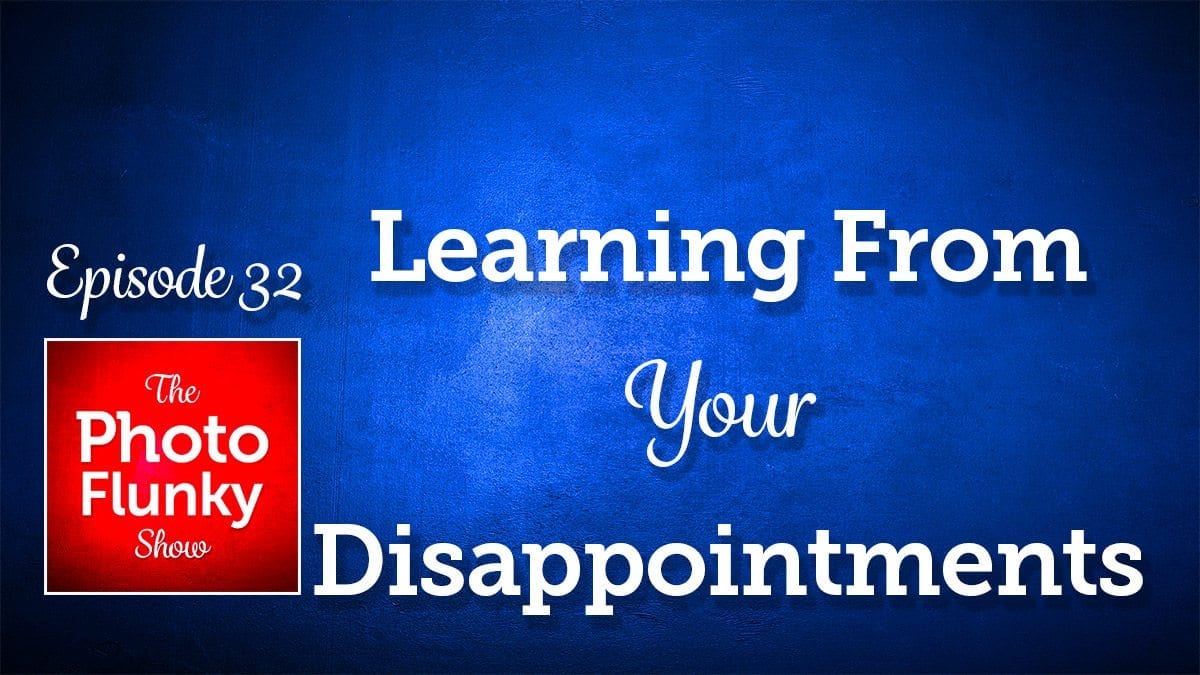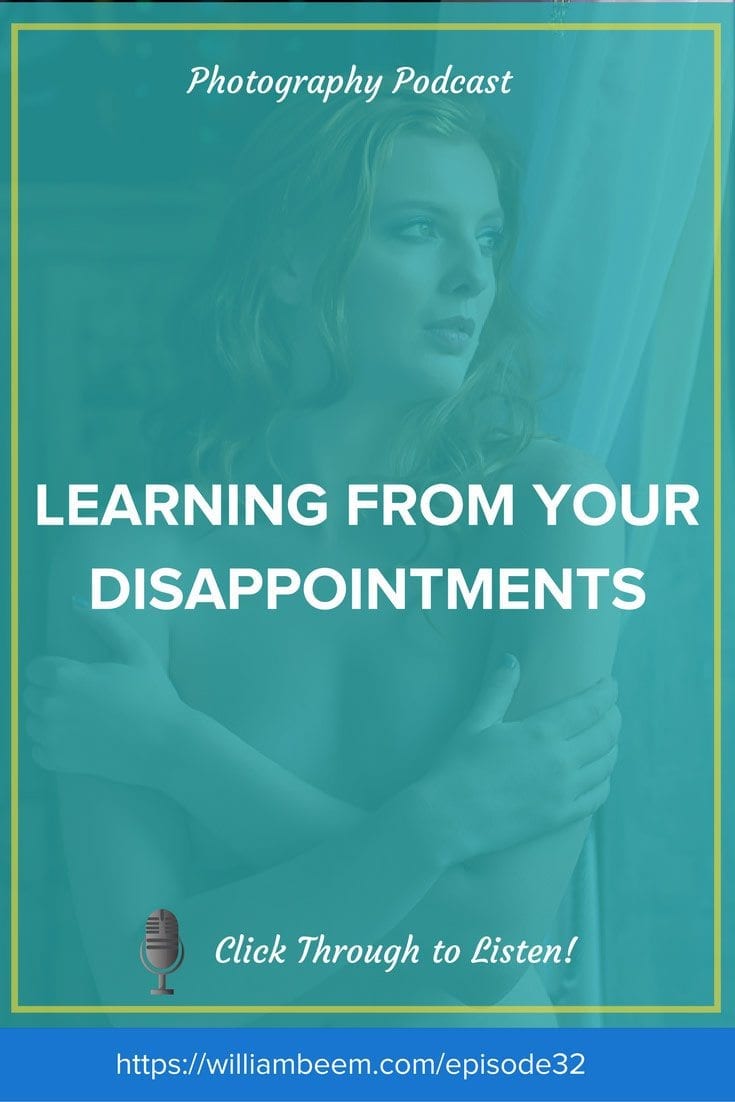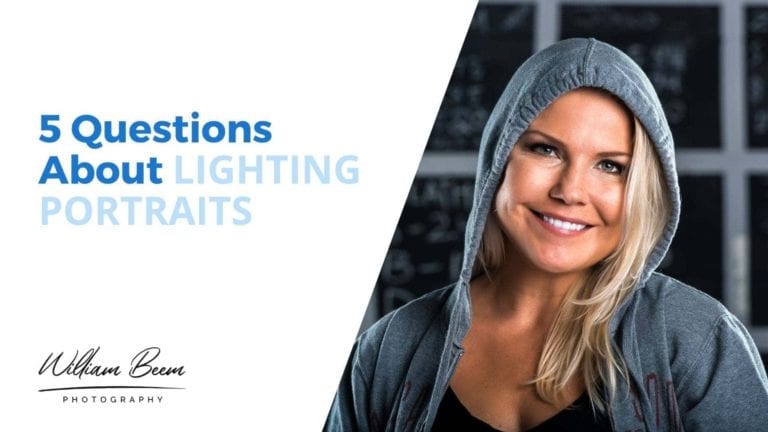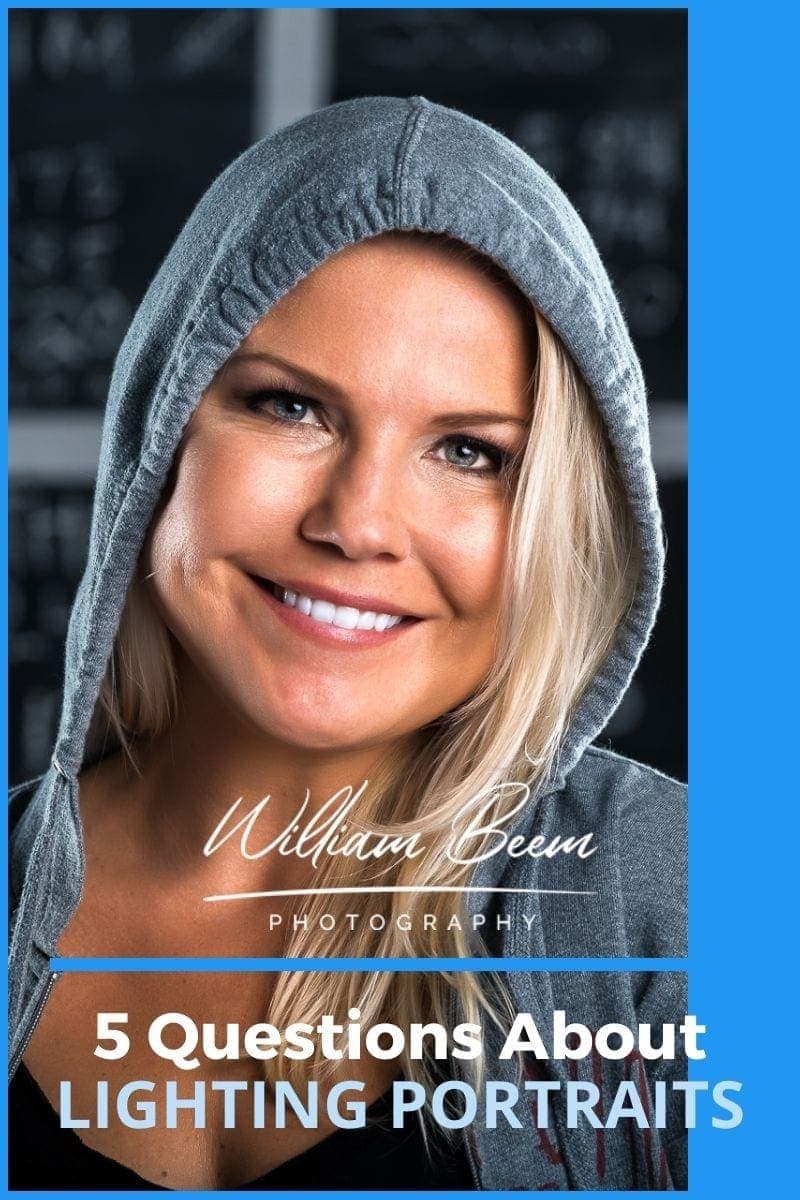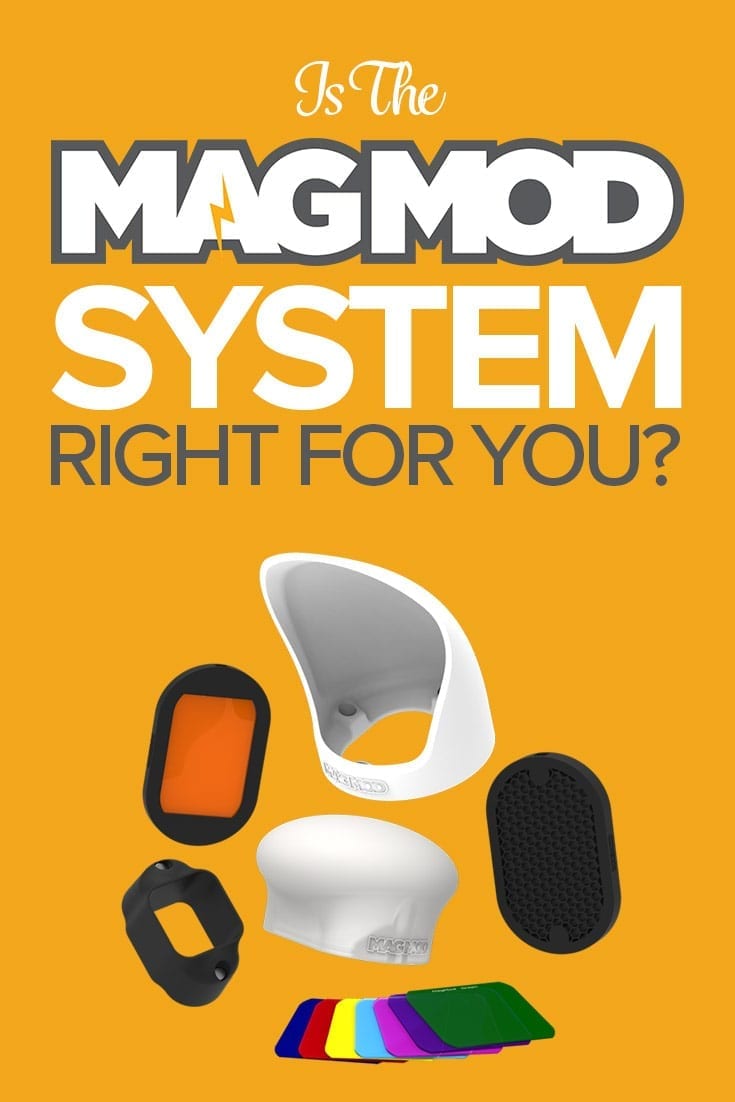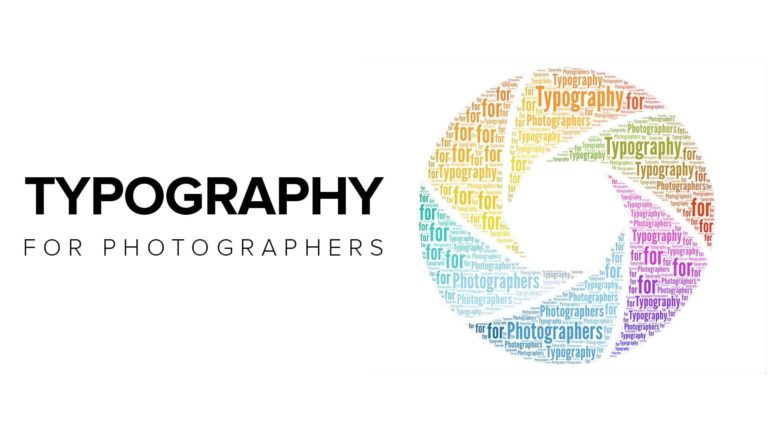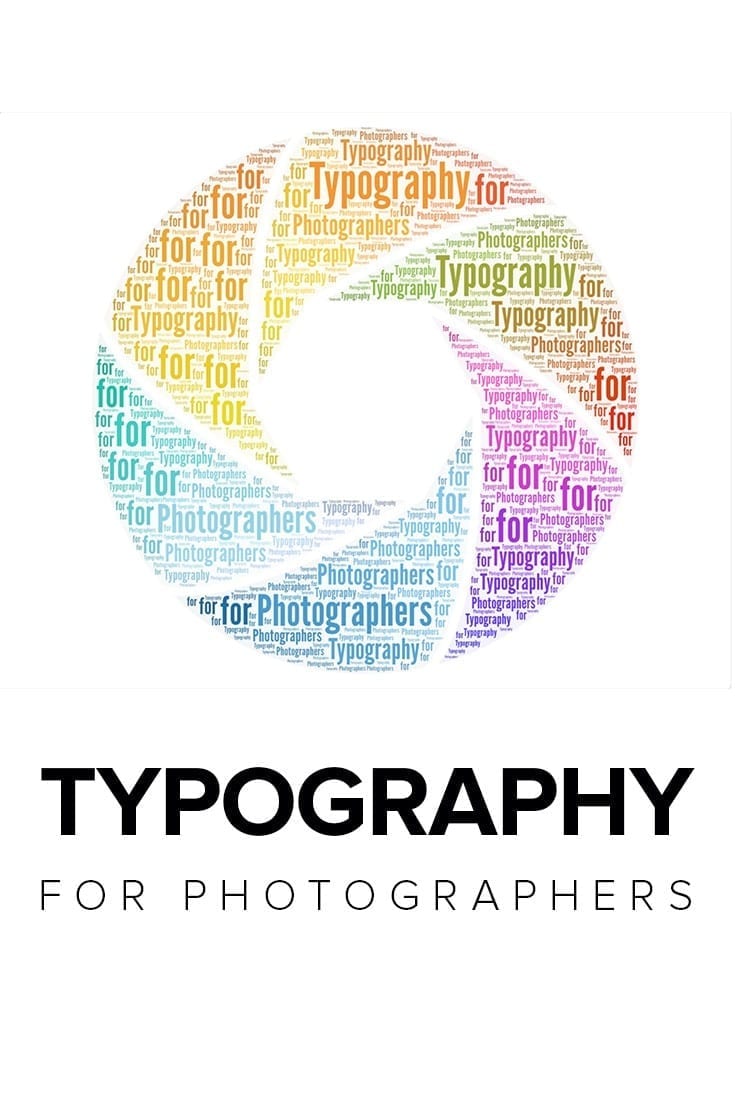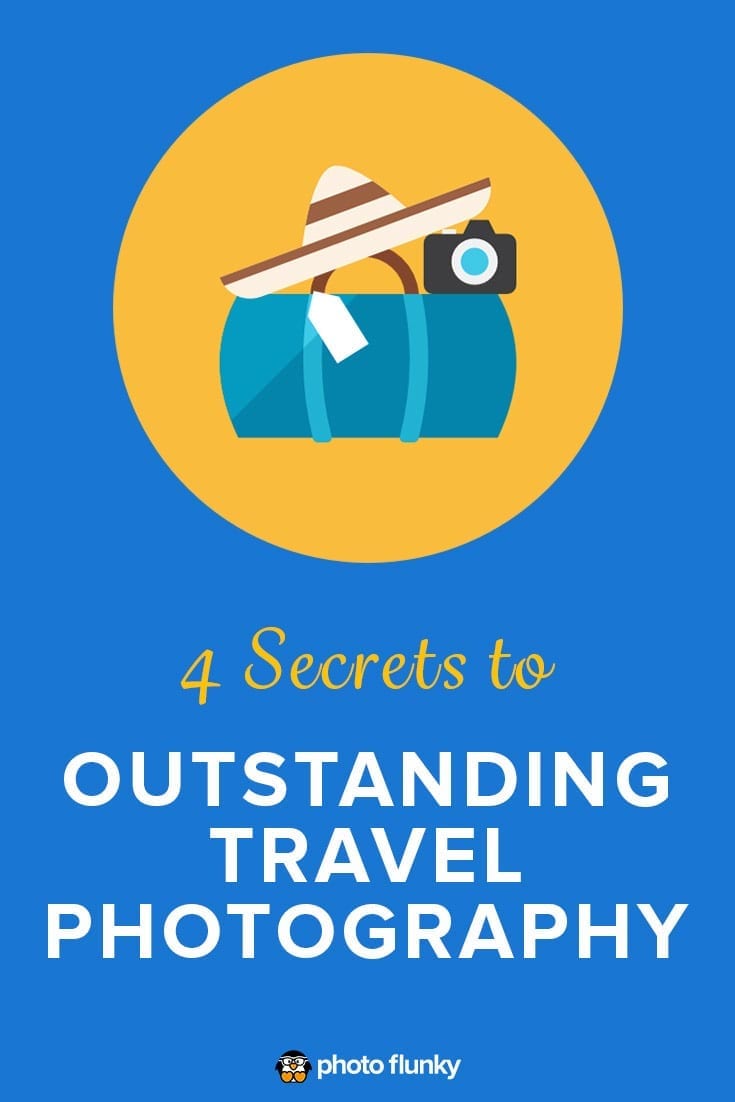Affiliate Disclosure: We earn a commission if you purchase through one of our links at no additional cost to you.
Why Learning From Your Disappointments Makes You A Better Photographer
Thank you for listening to The Photo Flunky Show episode 32.
Lee and I discuss some of our disappointments in photography and how to use them as learning tools. If you’ve ever had success at anything in your life, I’m willing to bet you made some mistakes on your way up the ladder.
Well, photography is no different. There will be disappointments. We talk about things you can control and how to deal with the things that are out of your control. Sometimes you may not get what you had in mind, but there may also be opportunities that come with disaster.
Let us know what you think in the comments, or share a story of what you learned after a disappointment. It may help someone else along the way.
Macphun Coupon Code
This is my affiliate code, which means that I make a small commission if you purchase from me, but it also means that you save money.
For Macphun products like Luminar and Aurora HDR, you save $10.
For other Macphun products, like the Creative Kit, you save 10%.
Just visit: https://williambeem.com/macphun
When you check out, use my Macphun coupon code: BEEM
Subscribe to The Photo Flunky Show
Thank you for listening to The Photo Flunky Show. Make sure you get every episode by subscribing.
iTunes – https://williambeem.com/itunes
Stitcher – https://williambeem.com/stitcher
Google Play – https://williambeem.com/googleplay
Blubrry – https://williambeem.com/blubrry
Social Media Links
We love seeing your photos and keeping in touch with you on social media. Here’s where you can find us.
Transcript
THE PHOTO FLUNKY SHOW: Episode 32
Hi! Welcome to the Photo Flunky Show, Episode number thirty-two.
The topic for this show: Learning from your disappointments.
William: Thanks for joining us. My name is William Beem.
Lee: Hi, I’m Lee.
William: And we’re glad to have you here on the Photo Flunky Show, episode number thirty-two. As usual, if you want a free transcript, go to williambeem.com/episode32 and of course if you want to subscribe there are subscription links there or you can check out all of our shows at photoflunky.com.
Today we are going to be talking about learning from your disappointments. But before we get to that, I’ve got a coupon code for you for OnOne Software. It’s one of the best software programs that you can get for helping to post-process your photos. Whether you’re doing landscape, they’ve got a program for portraits, they’ve got black and white, they’ve got everything covered in there. And I’ve got a coupon code to save you twenty per cent. You can just go to williambeem.com/on1 and when you check out use the coupon code WBEEM16. That will save you twenty per cent. That is the best discount code I’ve got. I love this software so I hope that will help you out. I get a little something from them. If you buy from us you get a twenty per cent savings on some fantastic software so I hope that helps you out. Thank you very much.
So learning from a disappointment is something that, if you’re going to be a photographer, you’re going to have disappointments coming at you once in a while, but the question is can you learn from your disappointments? Either so that that don’t happen again, or so that they kind of reset your expectations.
Lee, which do you think is more likely? Do you have to change your expectations or are you going to be able to change what you do.
Lee: A little bit of both. I think you have to change your expectations … you have to be realistic in your expectations. I think it’s not the setting high standards that is the problem. It’s accepting that sometimes you miss them and that doesn’t equate to a failure if you learn something for the next time. There are times where you have to go through a process of doing the same thing over a number of times before you do it well.
William: Do you think photographers are getting disappointed because of something that they did not anticipate or that they anticipated something that just wasn’t realistic?
Lee: Again I think there is a little bit of both there. Anticipating something that’s not realistic is a problem and sometimes that comes from seeing something without understanding the background to what you are seeing; be it a photo or a video or hearing somebody’s account of something. You can just get expectations that are unrealistic.
William: To me that’s what I have to worry about. I want to make sure I manage my expectations and the biggest way to avoid disappointment is to make sure that I’m not expecting something that just isn’t going to live up to it.
It’s happened to me before. I’ve got places and thought I’m going to get this beautiful photograph that I’ve seen so many times and I get there and sometimes travel scenes aren’t what you think when you see them in person.
Lee: That’s true. And a lot of this comes down to preparation. I mean, any kind of disappointment can often be avoided to a certain extent through properly preparing. Preparing doesn’t just mean learning how to set up and take and process the shot; it is also about researching a little bit about the surroundings and the rules around there. You know, lighting during the day, sunrise or sunset times – there are just so many things and you have to pick what is going to be important for your shot. And accessibility.
William: Well accessibility is something, but even particularly travel photographers, if you want to go get the shot that you’ve seen in magazines or other people’s work, sometimes the time of year that you go matters just as much.
An example might be off the Oregon coast there’s Thor’s Well. It’s just this big hole in the rocks, the tide comes in, the water shoots up above it and you want to make sure that you manage that. So when is there going to be high tide when the water is coming in? When is there going to be a sunrise or sunset? West Coast you’re looking for sunset time. In other words you want to get those optimal conditions. When does the sunset coincide with high tide? And you’ve got to plan your trip for that. You just show up because you happen to be there, but that doesn’t mean that nature is going to co-operate with you.
Lee: Absolutely and sometimes you have to allow yourself a little bit of leeway. If you are going somewhere for a trip, something like that where there are various factors that can come into account and influence the success of your shot or your perceived success of it, you need to give yourself a second option.
So don’t just book your only night as your last night. If it storms or you’re not able to go out, you’re kind of screwed. I’d leave a little bit of leeway. Put one in the bank just in case.
William: That’s the other thing. You mention the storms. You can go there at the right time of the year and everything seems right and the weather just doesn’t want to co-operate during your trip.
Lee: No, I mean you book a trip six months out and you don’t know about the tropical storm that is going to be announced a week before. You just have no idea.
William: Sometimes it’s luck of the draw, but when I say travel scenes aren’t what you think, one of the things that comes to mind is a little meme going around on Facebook that we saw. It was like, here is the photograph that you see and then here is the reality of it.
So for example, you see that Antelope Canyon. You know the nice sandy kind of orange walls with a sunbeam coming through and then you back off a little bit and you see there is like three dozen photographers all angling for position to try and get the same shot at the same time.
Lee: Yeah and it really sucks if you have an ultra wide lens. Trust me I know, because the person standing next to you is actually in your shot!
William: Well, that happened to me when I went to NASA, the Kennedy Space Center at the Vehicle Assembly Building. This is by volume the world’s biggest building and I went out there with that 14-24 mm lens and I wanted to get the shot. I knew exactly what shot I wanted to get and I’m looking at it right now because it’s hanging on my wall. And there is a little runway of lanes going down through there and there are three lines going through the middle of it. I knew I needed to get right dead in the middle of those lines so I had my leading lines going through.
Photographers to the other side of me didn’t care. They had different lenses going on. I knew exactly what I wanted. I was there as part of a tour and the tour guide would not get out of the way. The only reason I finally got this shot is he finished speaking and he was ready to go on and walk and I just said, “You know what? Let him go!”
He’ll yell at me (and he did). But I waited until everybody got out of my way until I could get that shot.
But I would say most people who are going on the tour would not get that shot simply because you’ve got to be the only one, you’ve got to get that spot, you’ve got to hope that nobody else is standing in your way; particularly the tour guide!
Lee: Sometimes you have to take your chances. I know that there is a shot that I wanted once. I had a 10.5 mm fish eye on and that’s really wide. It was late at night, the crowds weren’t bad, but to try and get that shot without a person in there I needed to get right up close. So eventually the way I solved it was by almost lying on the ground on my belly with this thing. Of course that had security (very friendly; I didn’t have any issues), but it did get some attention. Sometimes you need to take a risk.
I knew when I started doing that late at night that somebody was going to pay attention and come and see what I was doing. Sometimes you just need to, like you did – you knew you were probably going to get a bit of backlash from lingering behind, but you’ve got to take your risk.
William: Keep in mind, I’m talking about something where I was there as a tourist, not necessarily I’m someone there with special permission to go ahead and take this shot.
If you’ve got access rights, you’re doing this as a job for somebody, they are going to make sure you have what you need to get the shot. So that’s not a problem. You’re going to show up at the right time and if you don’t get the shot, you’re going to go back. You’re going to make it happen.
But if you’re traveling and you’re doing this for your own pleasure, travel scenes aren’t always what you think.
One of the best examples on this little meme that came up was, I think, the Taj Mahal. They showed this beautiful glowing building with this waterway going right through it and you see everything sparkling and clear. And then they show it later on with all the tourists around there covering it up and all the smog and pollution that was around.
Lee: Yes. Gross.
William: The Taj Mahal is such a beautiful building, but even the pollution is something that they can’t necessarily do something about it.
We recently went out to Epcot and they’ve introduced a new version of the ride out there called Soarin’ and this time instead of going all across America they take you around different parts of the world. One of them is where you’re skimming across the waterway or the little reflecting pool going into the Taj Mahal and I couldn’t help but notice all the pollution that was in the background.
Lee: Yes, you even commented.
William: And this is Walt Disney World that did this. They had all the luxury in the world to time when they were going to do that shot and they still had to come up with something that showed all that pollution in the background and that’s just the environment there.
Lee: They should have put some of the scent in as part of it so you can experience it.
William: No, that was another ride!
Another one that was on the meme was at the Eifel Tower. There is one of a little grass picnic area. You look at some of the photos and it’s like it’s mostly empty and clear. There’s a couple there having a nice romantic picnic. Then you see the next shot was what it’s really like. It is filled to the rim with tourists, all having their own little romantic picnic and you can’t do anything about that.
You’ve got to get there at a certain time. Maybe before anybody shows up for their picnic and if the lighting is right, that will work, but as far as the idea that you’re just going to wonder up to the Eifel Tower and take this beautiful scene without anybody in the way is like going to Walt Disney World and saying I’m going to take a picture down Main Street without anybody in it.
Lee: I think that part of the problem with having unrealistic expectations for travel photos is when you start planning something you look for the best of the best. You also need to step back sometimes and say, who took this photo? If that person was one of the National Geographic photographers, perhaps they got up there in a helicopter. Are you able to get up there in a helicopter? Do you have special access? Was it part of some media that had special media clearance? Do you need to arrange that?
These are the kind of things where it is maybe good to balance it out with some regular tourist shots that are not so good, not for the sake of the photo itself, but just to get a reasonable idea of what the scene is.
William: And don’t think that you have to be working for a magazine or as a business in order to get access.
I have been able to get access simply by asking a number of times. That includes when I did my photographs over the United States Capitol.
All I did was go to my Congressman’s office and request to be part of the tour. And I wasn’t thinking of anything special. I was thinking that’s how you get on the regular US Capitol tour.
Well, they did me one step better. They gave me a private tour. I was blown away by that, but I got access to room where apparently they kicked us out afterwards. I took some photos where they were refurbishing a couple of things.
I got to go out to the Speaker’s Platform, where they swear in the United States President every four years.
It’s another example of disappointment. I’ve got access to this wonderful scene that’s looking down the mall. At the time that I went the mall was under construction so this whole thing was just torn up and there were construction cranes out. It’s what happened there. I didn’t expect to go there; I didn’t expect to get that shot. I made sure I got it while I was there. Sometimes travel scenes aren’t what you think. Right now if you go to the United States Capitol, the Capitol building or at least the top is surrounded by framework because they are restoring it and it’s going to be another year or so before it actually looks like what we expect of the US Capitol.
Lee: Yes. Also things like barriers and fencing and things like that; sometimes you can get around that by the type of lens you have, but can you squeeze it through? Sometimes you can’t.
Like when we were in Las Vegas and we went up to the viewing deck in Paris, it worked fine with an iPhone because it’s got a tiny little lens and you can poke it through the bars, but if you had a big lens on a camera it would have been more of a challenge.
William: It is and if you go (like I said, this is in Las Vegas, the replica of the Eifel Tower) they do have openings that you can get your lens through. The problem is you can’t turn them in any direction you want to go. So if you want to angle it up or down, well you can’t really do that because it kind of keeps you shooting straight and there’s no shot there.
Lee: Yeah!
William: I’ve played with that a few times and gotten a few shots, but that’s just the nature of what it is. You’re going to a tourist area. They are more worried about making sure that you don’t throw anything off there than that you take a photo up there.
Lee: Yes.
William: Another time we’ve found disappointment is sometimes we want to know how to do something. We ask somebody or we go to training and we get advice and we are eager to go off and try to put it into practise. The problem is, once you do that for the first time you find out that either the advice wasn’t quite right or it wasn’t quite complete. They maybe missed a step or two.
And there you are just out there on your first ever time and you get there and you realize, oh no! I don’t know how to do this part. Or they didn’t cover that.
Lee: Well sometimes they assume that you know things because they don’t have to think about it. I’ve done it as well. I’m a terrible teacher and getting back to basics sometimes you disregard things because you assume that somebody is going to know this. And that’s not always the case.
So it’s not that they are trying to sabotage your photo through the advice, it’s just that something was kind of common sense to them that wasn’t logical to me.
William: I think you’re exactly right. They are not trying to sabotage you. They are not trying to leave something out and then get a laugh later on. They are trying to help you.
If someone is giving you advice, they want you to succeed.
But you’re right. They may have glossed over something that didn’t …. They forgot about that part or assumed that you knew that if you were going to take a picture in the dark that you needed some source of light.
Lee: Yes!
William: Something basic, but still important that you can’t really get it done without enhancing that advice.
And that is where you need to be able to think ahead. You need to be able to do some planning. So if you’re getting advice from somebody where you can have a back and forth conversation, you need to stop and ask questions.
Say, OK I go to this, this and this and kind of think through the process before you lose that resource that is going to tell you something.
And that is not always possible. If you are at a lecture or a seminar or something like that, you may not get the chance to ask questions back and forth. But you at least need to think about it and see if you come up with any problems with the flow before you get out to actually do the shoot.
Lee: These days most lectures and seminars have some kind of online forum where you can have questions and answers afterwards; or a community or even somewhere else.
So the idea is to throw things around a little bit, generate some more questions to make sure you’ve covered as many bases as you possibly can.
William: I’m saying don’t take things verbatim. Ask questions. Think it through in your head because if you haven’t done some pre-planning, even if you’ve got a recipe from somebody, the recipe may not be complete. We found that out just barbecuing. Sometimes there were things that people left out and you say, oh yeah! That was important. We had to buy meat.
It’s really basic. And some seminars, the ones I’ve been to have primarily been Kelby One and I know when they take a break – this is the part that always amazes me – you think everybody else needs to go off and use the restroom or something like that, but the instructor will stay there through the break and answer questions. And there will be a line going up. If it is Scott Kelby he will stay there and answer questions and there will be a line of people going up to ask him during that break.
So that is your chance when you heard something presented in the seminar, you think it through and you think, OK what do I do in this circumstance? Get in line and go ask the question.
Lee: And hearing other people’s questions helps as well. So by all means, go onto forums or go and find somewhere, or get into a community or a group where you can listen to other people. They will ask questions you didn’t think to ask.
William: But the biggest advice is you can avoid disappointment by thinking it through and planning ahead of time. Don’t take it verbatim, go out for the first time and then find out on the spot that something doesn’t work or you don’t have a key piece of equipment. You need to do your own part to prepare for going off for the shoot with someone else’s advice.
Lee: That’s right.
William: Here is the biggest disappointment. Sometimes you just get nothing for your trouble. You can go out and you can get skunked.
That is something that you are simply going to have to learn to accept. There are times when the shot just does not come together. It may be due to weather, it may be due to somebody doesn’t show up.
I’ve had photo shoots planned where there was a paid model and the model just woke up one morning and said, “I don’t feel like it.” And she was also supposed to drive another model out there. So the other model who wanted to work and get paid didn’t show up.
I’m already over at the beach for example. I’ve got my camera, I’ve got everything that I need, I’ve got other people there with me and I’ve got no model.
Lee: That sucks!
William: It does! And all I can do really is apologize to the people who are with me. I’m sorry, the model is unable to make it here. I don’t necessarily say she didn’t feel like it because she went out drinking too much the night before. That was only one occasion and it’s not a common thing, but occasionally people have problems.
Maybe their car breaks down. It’s not that they are being irresponsible. It could simply be that their transportation doesn’t work to get them to you.
It could be that you’ve gone off to photograph some wildlife and that animal decides to sleep in because it had a hard night of partying the night before.
Lee: Yes, lions!
William: Yes, exactly. Lions are lazy.
Lee: And they go in the shade where you can’t get a decent shot of them as well.
William: But something. Your subject doesn’t show up, the weather isn’t what you need, you go to get access and the person who is supposed to unlock the door for you doesn’t show up. It’s outside of your control. You cannot control every factor, but you’ve got to understand that there are going to be times when you are going to go do a shoot and what you need isn’t there. And you just have to accept that this is part of the game.
Sometimes you can’t get a shot.
Lee: That’s what I eventually learned to take away from it. I think I might have spent the first six months every time I had a day like that of thinking of listing my camera on eBay. That’s it. No more photos.
But you get over it and eventually you realize that there are very few things, if any, in life where you nail it the first time unless it’s just luck.
Anything where you want to make progress and do better, you need those failures. People who learn from failure have a much better and long lasting lesson than people who learn just from advice.
William: I agree with that. And in cases where I have had people who were supposed to show up that didn’t, I have a list. It’s a small list, but those are people I’ll never work with again. I will never make them another offer. If your first time to work with me, particularly if it’s a paid shoot – if it’s something where we are just collaborating for free then it’s no big deal – but I appreciate the courtesy of a call rather than finding out that you didn’t show up – but if it wasn’t a paid shoot, I understand that.
But if you’ve got a paid shoot and you don’t show up and you’re responsible for bringing someone else and you don’t take them out there, then you’re not the kind of person I want to work with. You are on the black list as far as I’m concerned.
Lee: Unreliable.
William: Well yeah, and that’s one of the ways I eliminate disappointment. Why in the world would I give them the opportunity to disappoint me again?
Lee: Well exactly. But I guess what we are saying is don’t sweat. Accept that making mistakes and coming away with nothing is part of it. I’ve set up and sat out for a whole day and come back because I did something stupid (most of the time). Other times it was factors outside of my control, but sometimes there really was nothing you could have done to have known or to prevent it in advance. And that just happens.
But I have also learned that making a mistake – when you learn to accept your mistakes instead of beating yourself up over it – you’re able to move on.
William: And just because things are out of your control; like I said, you cannot control every factor, that doesn’t mean you come back with no shot. It means you don’t come back with the shot that you expected. But sometimes you can get something else.
Lee: That’s a good point.
William: An example that came to mind for me was a few years ago Walt Disney World had something where they were going to be open for 24 hours.
Lee: Oh yes.
William: And I had this image of Cinderella Castle with the sunrise just peeking over. I knew exactly where I wanted to be.
We got out there, it’s fog thick as a blanket. We can’t see a damn thing. You certainly couldn’t see the sun.
I did not get the shot that I imagined. I got something else. I got something very misty and creepy. I made Cinderella Castle end up looking like something the Villains had taken over.
Lee: See I love that shot.
William: I know. You do love that shot. A lot of other people love that shot. It is not at all what I wanted. It was beyond my control. I can’t control the fog.
I was out there with everything I needed but I couldn’t control that factor. But I could take advantage of it and do something different.
So you need to be flexible and adaptable. It’s like if circumstances change on you, you have got to scratch your head and say, OK this isn’t what I thought I was going to get. Don’t give up and go home. Work with what you’ve got.
Lee: Or work with something else that’s nearby.
I’ve got a question for you. If you hadn’t had a plan for that shot and you had just gone in there and seen the castle and taken it, would you have been disappointed?
William: You mean if I had just got there?
Lee: Yeah, if you had just gotten there and taken the exact shot that you got but you hadn’t envisaged something different. Would you have loved the shot that you have?
William: Maybe. But that is hard for me to answer simply because I always plan at least one of my shots in advance. I know what I want to get before I go out there. I can see it in my mind’s eye. This is the castle, this is where the sunlight is going to be peeking through. I knew exactly what I was going to get. Except for the fog!
Lee: See I plan differently to what you do. Maybe because I’ve made more mistakes. I have a plan. I know where I’m going and I’ll plan setting up or how to get the shot, but as far as where the sun is coming in and that kind of thing, I just don’t bother to plan it.
William: Oh I do. Let’s take fireworks at Walt Disney World at the Magic Kingdom for example.
There are shots in front of the castle, there are shots a few steps back behind the Hub. There is a statue called Partners of Walt and Mickey Mouse holding hands. And that is a really nice foreground element for your shots. But also, we have seen shots and I’ve taken shots from behind the castle; I’ve taken shots from off side. Remember there was one I put in a blog post that came up on fireworks that was over this grassy field where nobody was sitting. There was nobody in my way. You could tell the crowd was way off to the side and I really liked that shot.
It was a different angle on the same subject and then you can go all the way back down Main Street to the train station and shoot from there, if not for that annoying flag pole that is in the way.
There are different ways to shoot the same thing and I need to know before I get there where I want to be.
Lee: See, my problem is I tend to do things on a whim. So over the years I would find myself planning where I want to be, setting up and sitting and waiting and at the last possible minute I would look behind me or look to the side and see a gap somewhere and think, “Ooh, I’d rather be over there!” and then all of a sudden everything is getting reset up or I’m switching a lens out.
I’ve just learned that that is how I am. I tend to do things on a whim sometimes.
William: I wouldn’t discourage you from that. I mean if you see an opportunity and it’s there for you to take, why not take it?
Lee: I saw a risk and took it.
William: Maybe it’s an opportunity, maybe it’s a risk. I mean to me they are both the same thing. Yeah, you abandon what you had in mind because you saw something else and you liked it better.
Lee: Yeah.
William: I’m fine with that. To me that is still, even before the event went off, you are moving over there because you could see in your head, that you like that angle instead.
It’s not as far in advance. That’s the only difference.
Lee: I think what my problem is, is something will work a couple of times and I’ll think well that’s where I need to be. And often the realization dawns on me one time when I’m sitting there for whatever number of times, thinking I’ve done this so many times. It’s not going to hurt to lose a shot to risk getting something different.
William: Exactly. Like if you’ve done the same thing a number of times you don’t have to keep on doing it. Move somewhere else. Get a different angle.
One of the shots I want from Epcot isn’t even in view of the fireworks. It’s a view of Spaceship Earth with the fireworks exploding behind it. I think that is going to be a nice scene and that is probably the next one I’m going to go shoot. I’ll miss ninety per cent of the show, probably.
I’ll get a different angle or shot that other people aren’t getting because they are not there. Most people are going to be there around the lake, the World Showcase Lagoon.
I don’t know where they come up with these names. Why is it a lagoon?
Anyways, people are going to be there surrounding that and most of them are watching the show, rather than trying to take pictures.
A few people are going to try and take pictures of fireworks with their small flash. And I always enjoy that.
Lee: Yes.
William: But there is nobody stupid enough like me that wants to get completely out of view of the fireworks except for the ones that are going to be going up over Spaceship Earth.
Lee: Well it’s something different. I mean if it were your first time shooting the fireworks, I get it. You want to get the full on view. But we’ve done this so many times.
William: Well, that’s the thing about events. Sometimes if you are shooting fireworks at your city it doesn’t happen that many times.
We are lucky enough that we get to go out to Disney World and they shoot fireworks off every night of the year. And we can practise.
Lee: Yes.
William: We can say, OK let’s do it over here. And that is the thing about travel photography: most of your great travel photos aren’t taken by someone who was on a trip. They were taken by someone who lives near there and goes back time and time again until they get that perfect shot and then that is the one they sell.
Lee: Yes and that’s a form of accessibility. It’s not something where you need special clearance, but just being able to access a place gives you more opportunities.
William: Yeah. So the closer you are to a beautiful spot or beautiful scene or beautiful person that you can shoot over and over again, the better your odds are of getting the photograph that no-one else is going to get.
Lee: Yes.
William: One last thing that we wanted to talk about is sometimes you just get lucky with a shot and you get a beautiful portrait, you get a beautiful image, whatever it may be. The problem is getting lucky isn’t repeatable.
Lee: It’s a curse.
William: If I get lucky with a shot, I am always happy and I always smile and I’m thinking, look at what I got! Then I realize I didn’t really do anything. I just got lucky and pressed the shutter at the right time.
Lee: Oh no, that’s not what bugs me. I don’t care about getting lucky. My problem getting lucky is that usually it means I didn’t know what I did to get it, so I’m not going to be able to do it again.
William: Well, same thing. Getting lucky either with your exposure or getting lucky with your timing, if you can’t repeat it, it’s not really … you got one shot and that’s it.
Lee: Yeah.
William: Then you’re going to be disappointed the rest of the time because you can’t do it again. And I’ve tried this with motion. One of the things I really like is to have some sort of motion in my photography and when I’m doing portraits with models, I don’t necessarily want them standing still.
I like it when their hair is flipping around or there is some kind of movement in there. But when people are moving and you flip your hair it takes a second, if that much, to do it. And you can get some really awful expressions on people’s faces when they are flipping their hair around.
So sometimes the hair is right. It’s perfect, it’s flowing; and then they are gritting their teeth like I’m pulling a needle out of my skin.
It’s nice to be lucky, but it isn’t repeatable. In order to be repeatable, you have to be able to control the environment and circumstances and that is just where you’re going to have disappointment if you get lucky and then you try do it again.
Lee: But you learn eventually to learn to enjoy the shot that you got that was lucky and not to nail yourself on that basis the next time when you don’t get it.
If you understand how it happened, that is not a bad thing. It’s not that you did a bad job and it’s not that you didn’t deserve it. Because everyone deserves to be lucky now and then! But you also learn not to beat yourself up if you don’t manage to replicate that.
William: Well one of the things I put out rather flippantly is “Better lucky than good”. Because that means it happened, it got there and I didn’t have to suffer very much to make it happen, but the truth is I’d rather be good. I am constantly working to try and be good at what I do. I like some of the stuff that I do. I’ve got other things I struggle with just like anybody else does. The more I do it and repeat it, the better I get at some of these things and I’m happy with that.
Lee: Being good means you have to fail a few times. And failure is also kind of a matter of perception sometimes. What I used to see as failures before and what I see as failures now have kind of changed. My failures today I used to view as big successes a few years back, but I’ve made progress because of the mistakes I’ve made. And I have made some really dumb mistakes. You could do a whole show on them. It would be a comedy hour.
William: Everyone successful has a list of failures behind them.
Lee: All kinds of stuff that you just couldn’t believe.
William: Exactly. And some of the things that I was very proud of when I first did them a few years ago, I would look at now and think, oh don’t let anybody see this.
Lee: Yeah, I’m the same. I’ve actually gone and deleted stuff that I don’t really want up for show.
William: Exactly.
We hope you enjoyed this on learning from your disappointments. If you’ve got a few disappointments that you think others might be able to learn from, we would be happy to hear about them. Just leave us a comment in the show notes.
Thank you for listening to the Photo Flunky Show. Again, show notes are available for free at williambeem.com/episode32. You can get a transcript of the show there also for free. And of course there are subscription links.
If you want to download the show automatically from iTunes, Google Play Music or Stitcher Radio, just head on over there or to photoflunky.com
And while you’re at it, it wouldn’t hurt you to leave a nice review for us on iTunes. We would love to see your honest rating and review. Just go to williambeem.com/itunes It will take you right to the show. Leave your rating and I’d be happy to see it.
As always, thank you so much. We appreciate you for being here and we look forward to seeing you next week.

